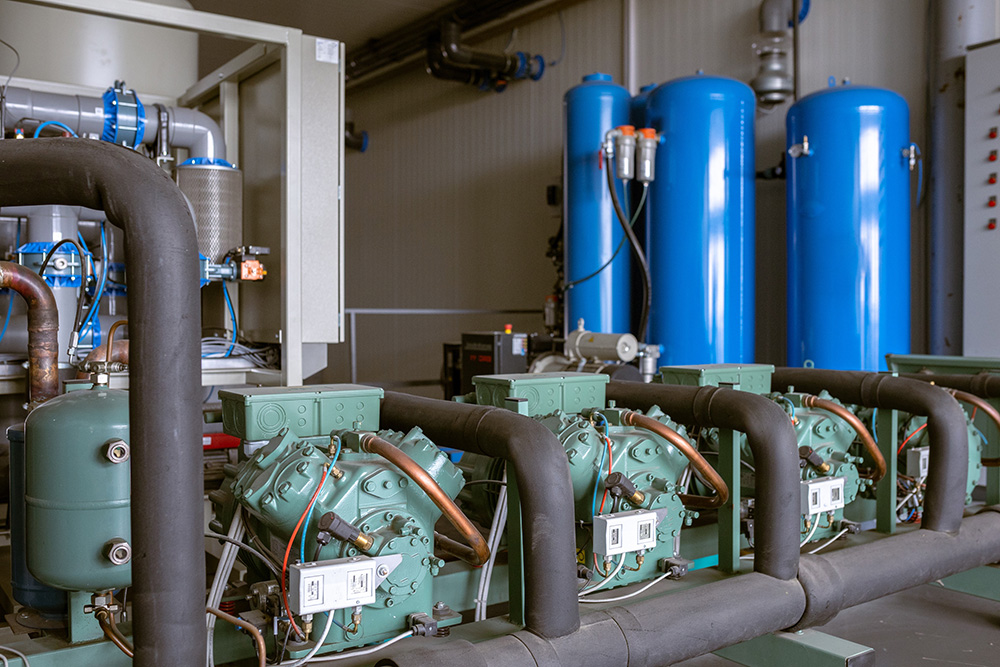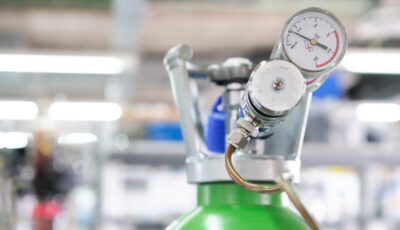PSA Hydrogen Purification with Zeolite – Breakthrough Technology for Industrial Applications
Zeolite molecular sieves are instrumental in PSA hydrogen purification, selectively adsorbing impurities such as water and hydrocarbons to enhance the purity of hydrogen streams. By leveraging the unique pore structure of zeolites, PSA processes can efficiently produce high-purity hydrogen essential for various industrial applications.

Zeolite PSA Technology: An Overview
Zeolite Pressure Swing Adsorption (PSA) technology is a cutting-edge process used for hydrogen purification in various industrial applications. This innovative method offers an efficient and cost-effective means of separating hydrogen from diverse gas mixtures. At Hengye Inc., our expertise lies in providing advanced zeolite products meticulously tailored to suit PSA applications, ensuring unmatched performance and reliability.
Fundamentally, the key to this revolutionary technology lies within the specialized properties of zeolite, a porous material with uniform-sized pores that can selectively adsorb smaller molecules, such as water or carbon dioxide. In the context of hydrogen purification, zeolite functions as an exceptional adsorbent due to its ability to differentiate between hydrogen and other gases present in the mixture. As the gas mixture passes through the zeolite bed, non-H2 gas molecules are selectively captured, allowing ultra-pure hydrogen to be extracted from the outlet side.
Utilizing zeolite for hydrogen purification offers several advantages over conventional methods. Unlike liquid solvents or cryogenic distillation, PSA technology operates at near-ambient temperatures and can function under moderate pressure, making it energy-efficient and environmentally friendly. Additionally, it provides a higher recovery rate of hydrogen with minimal energy consumption, contributing to significant cost savings for industrial processes requiring high-purity hydrogen.
The success of PSA technology heavily depends on selecting the right type of zeolite that best suits the specific requirements of the industrial application. Hengye Inc. understands the critical importance of tailored solutions and offers a range of advanced zeolite products, including molecular sieve type 3A, 4A, 5A, 13X, and specialty zeolites optimized for PSA applications. These meticulously engineered products ensure optimal selectivity and efficiency in separating hydrogen from complex gas mixtures.
In industrial gas separation applications where purity and efficiency are paramount, leveraging powerful technologies like PSA with tailored zeolite products delivers unrivaled benefits. Through continuous innovation and product development, Hengye Inc. is committed to empowering industrial processes with state-of-the-art solutions for hydrogen purification.
By harnessing zeolite PSA technology tailored specifically for industrial applications, companies can unlock unparalleled precision in hydrogen purification while simultaneously optimizing operational costs.
Embracing the profound significance of zeolite in hydrogen purification solutions opens new doors to unparalleled industrial precision and efficiency.
Understanding Zeolite and its Significance in Hydrogen Purification
Zeolites are fascinating materials with a unique ability to selectively adsorb certain molecules while excluding others. This distinguishing characteristic has led to zeolites being widely used in various industrial applications, including hydrogen purification. When it comes to selective adsorption of hydrogen from gas mixtures, zeolites are the star players.
Why is this significant? The exceptional adsorption capacity of zeolites makes them an ideal choice for Pressure Swing Adsorption (PSA) processes, where they can effectively separate hydrogen from other gases. This selectivity is crucial for industries reliant on large-scale hydrogen production and purification, such as petrochemical refining, fuel cell technology, and ammonia production.
The Role of Zeolite in Hydrogen Purification
On a molecular level, the porous structure of zeolite allows for effective separation and purification. As the hydrogen gas flows through the zeolite bed during the PSA process, it adheres to the surface of the zeolite crystals due to its size and affinity. Conversely, other gas molecules are excluded from adsorption due to their larger size or differing chemical properties.
The ability of zeolites to preferentially adsorb hydrogen while rejecting impurities is pivotal for achieving high-purity hydrogen streams essential for various industrial processes. In essence, this characteristic enables efficient removal of impurities and moisture from crude hydrogen feeds, thereby enhancing the quality and purity of the end product.
Moreover, zeolite’s durability and stability ensure consistent performance over extended operational cycles, contributing to the reliability and longevity of PSA systems employed for hydrogen processing.
Our company, Hengye Inc., specializes in providing top-tier zeolites tailored specifically for hydrogen purification applications. With an emphasis on quality and performance, our range of zeolite products is engineered to meet the stringent demands of industrial hydrogen purification operations.
Understanding the intrinsic role played by zeolites in hydrogen purification elucidates their indispensable value in optimizing PSA processes for enhanced efficiency and productivity.
Selectivity and Efficiency of Zeolites
Zeolites are truly extraordinary in their ability to selectively adsorb hydrogen molecules as opposed to other gases. This unique capability is what makes them an indispensable component in the efficiency of Pressure Swing Adsorption (PSA) processes. Unlike many other materials, zeolites feature well-defined pore structures and surface properties that allow for the precise control of adsorption and desorption of hydrogen gas—resulting in highly efficient separation.
Consider the zeolite’s pore structure as a highly organized sieve, where only the hydrogen molecules, which are smaller, can fit through while other larger molecules are left behind. This selective behavior plays a crucial role in ensuring that the end result is pure hydrogen.
Hengye Inc. Engineered Zeolite Properties
Hengye Inc.’s zeolite products boast precisely engineered properties that are tailored to maximize both selectivity and efficiency in hydrogen purification. These finely tuned properties play a critical role in optimizing the PSA process for maximum productivity and purity.
On one hand, selectivity refers to the ability of the zeolite to discern between different gas molecules, allowing it to favor the adsorption of hydrogen over other gases. This is achieved through meticulous engineering that ensures the zeolite’s structure is specifically suited to attract and hold hydrogen molecules while rejecting others based on size, shape, or chemical properties.
Furthermore, these engineered properties enable the zeolites to maintain high levels of efficiency throughout the entire PSA cycle. The precise control over adsorption and desorption afforded by these properties ensures that only the desired components are retained during adsorption and then efficiently released during desorption.
I like to think of engineered zeolite properties as having a key that perfectly fits a specific lock. Just as a key expertly crafted will effortlessly open a lock without jiggling or struggling, Hengye Inc.’s zeolite products smoothly carry out their roles with extreme precision and reliability.
The combination of selectivity and efficiency offers a significant advantage in PSA applications by allowing for optimal utilization of resources and enhancing the overall productivity of the hydrogen purification process.
In essence, it’s through this careful engineering at Hengye Inc. that zeolites are able to demonstrate such exceptional selectivity and efficiency in purifying hydrogen—an invaluable contribution to various industrial applications where purity and productivity are paramount.
Now let’s unravel the fundamental principles and mechanisms behind zeolite adsorption – a fascinating world waiting to be explored.
Principles and Mechanisms of Zeolite Adsorption
Zeolites are like nature’s tiny sponges. Their unique porous structure enables them to capture certain molecules while allowing others to pass through. This remarkable property forms the basis of how zeolites adsorb hydrogen in a Pressure Swing Adsorption (PSA) process. But just how do they pull off this molecular magic trick? Let’s take a closer look at the inner workings.
Picture zeolites as being made up of intricate labyrinths with twists and turns. These microscopic pathways are what give zeolites their high selectivity for particular molecules, like hydrogen in PSA processes. It’s almost like a molecular maze, with smaller gas molecules easily navigating through the passages while larger ones become trapped. This is due to the size and shape of the channels and cages in the zeolite structure, which allow them to selectively trap specific molecules based on their size, polarity, and other molecular properties.
When hydrogen gas comes into contact with the porous material of the zeolite, it enters these channels and encounters an environment that’s uniquely suited to its size and properties. The inner surface of these channels is lined with charged atoms that interact with the hydrogen molecules, attracting them towards it, holding onto them momentarily before releasing them back into the flow.
This selective process harnesses the differences in molecular sizes and polarities to hold onto targeted molecules while letting others pass by unaffected. In essence, this is what makes zeolites so effective at removing impurities from gas streams—especially hydrogen purification for industrial applications.
You can think of it like sorting marbles based on size and color. If you have different-sized marbles mixed together, you could use a special sieve with holes of various sizes to separate them. The sieve allows only marbles of a certain size to fall through while keeping larger ones trapped on top.
In a similar way, zeolites work as molecular sieves, selectively capturing smaller gas molecules like hydrogen while letting larger or less suitable molecules move past. This intricate network of channels acts as a molecular gatekeeper, letting only certain guests inside while turning others away.
With such an understanding of these principles, engineers can optimize the design and operation of PSA systems using zeolites to ensure maximum efficiency and effectiveness in hydrogen purification for industrial uses. Having this knowledge not only improves performance but also contributes to more efficient and sustainable industrial processes overall.
Ultimately, comprehending these principles allows us to make better strategic decisions when utilizing zeolites for hydrogen purification needs in various industries.
By mastering these fundamental mechanisms behind zeolite adsorption, we can unlock the true potential of this breakthrough technology, leading to more efficient industrial applications and cleaner energy solutions for the future.
PSA Hydrogen Purification Processes Using Zeolite
Imagine a system that can sieve gas like how we can sieve through different-sized rocks. That’s exactly what happens in Pressure Swing Adsorption (PSA) processes using zeolite. Hydrogen is somewhat small and nimble compared to other gases, and this specialized sieving ability allows zeolite to selectively capture it.
So, how does this work?
At the starting point of the process, a pressurized mixture containing hydrogen is introduced into a zeolite bed. As this mixture travels through the zeolite bed, the zeolite acts like a gatekeeper, selectively trapping the hydrogen molecules while allowing other gases to pass through. This selective capture of hydrogen is made possible due to the unique pore structure of the zeolite, which acts as a filter, only allowing smaller molecules like hydrogen to enter.
The PSA Cycle
The heart of this purification system lies in the pressure swing cycles. During these cycles, the zeolite bed goes through two distinct phases: adsorption and desorption.
- Adsorption Phase: In this phase, under high pressure, hydrogen is captured by the zeolite while other gases are allowed to pass through.
- Desorption Phase: Next comes the desorption phase where the pressure inside the system is dropped. This causes the trapped hydrogen molecules to be released from the zeolite bed.
This alternate cycle of adsorption and desorption enables highly pure hydrogen to be separated from other gases present in the feed mixture.
Like a sponge soaking up water and then being wrung out to release it, zeolite goes back and forth between capturing and releasing hydrogen during these pressure swing cycles.
Hengye Inc., recognizing the vital role that tailored zeolite solutions play in enhancing the efficiency and reliability of PSA hydrogen purification systems, is dedicated to offering custom solutions that optimize this critical process.
Think of these tailored zeolite solutions as specifically designed tools that ensure that every step of the PSA process is optimized for maximum performance, resulting in increased productivity and reduced operational costs for industries relying on industrial gas purification.
By understanding how PSA processes work alongside tailored zeolite solutions, we gain insight into just how crucial this breakthrough technology has become for industrial applications.
Zeolite Membranes: Properties, Composition, and Surface
Zeolite membranes aren’t ordinary materials; they’re tailored using advanced technologies to achieve remarkable gas separation efficiency. These thin films, composed of zeolite materials with precisely engineered pore structures, serve as a critical component in various industrial applications, particularly as a breakthrough technology in hydrogen purification processes. The specialized design of these membranes enables them to be selective in separating gases based on their molecular sizes and interactions with the membrane material.
The pores within the zeolite structure not only offer a pathway for gas molecules to permeate but also restrict the passage of larger molecules. This selectivity is crucial in achieving high-purity hydrogen gas by effectively removing impurities and unwanted components. Through precise engineering, these membranes can be fine-tuned to provide optimal selectivity for hydrogen while enabling the passage of other gases, contributing to efficient purification processes. This ensures that only high-purity hydrogen continues its journey through the membrane while impurities are left behind.
When it comes to composition, zeolite membranes boast a complex network of interconnected channels and voids that provide an extensive surface area for gas separation. This intricate structure is designed to maximize the interaction between gas molecules and the membrane surface, enhancing the efficiency of gas separation processes. Additionally, the tailored composition of these membranes allows for long-term stability and enhanced durability, making them an ideal choice for prolonged industrial usage.
For instance, Hengye Inc.’s expertise in zeolite membrane technology ensures that the composition is finely tuned to meet the demanding requirements of hydrogen purification. The tailored composition not only guarantees superior selectivity for hydrogen gas but also offers long-lasting performance, minimizing maintenance and replacement costs over time.
Addressing Challenges of Zeolite PSA Technology
When using zeolite for pressure swing adsorption (PSA) in hydrogen purification, several hurdles need to be overcome. These include heat and mass transfer limitations, channeling effects, and pressure drop problems.
Firstly, heat and mass transfer limitations can impede the efficiency of the PSA process. When the heat or mass isn’t being transferred as efficiently as required, it can lead to limited capacity and reduced performance, resulting in lower purity levels of the produced hydrogen.
Moreover, channeling effects can occur due to uneven flow distribution through the zeolite bed, disrupting the equilibrium in the adsorbent bed, and resulting in lower purity and recovery levels.
Another challenge is pressure drop issues. Excessive pressure drop can occur when the gas flow encounters resistance within the zeolite bed, negatively impacting the overall process efficiency.
While some may argue that these challenges make zeolite PSA technology less attractive for hydrogen purification, with advanced engineering and tailored zeolite solutions, these obstacles can be effectively managed and even overcome.
Hengye Inc. specializes in addressing these challenges by offering innovative zeolite products and custom engineering solutions. They understand the importance of optimizing PSA technology for hydrogen purification in industrial applications and tailor zeolite solutions to ensure efficient heat and mass transfer, mitigate channeling effects, and minimize pressure drop issues.
By turning to specialized zeolite providers like Hengye Inc., industries relying on hydrogen purification can benefit from cutting-edge solutions that maximize the effectiveness of zeolite PSA technology while minimizing its inherent challenges.
For more information about how Hengye Inc. can assist with your hydrogen purification needs, feel free to reach out to them at Hengye Inc.. Call us at (844) 308-3271.


